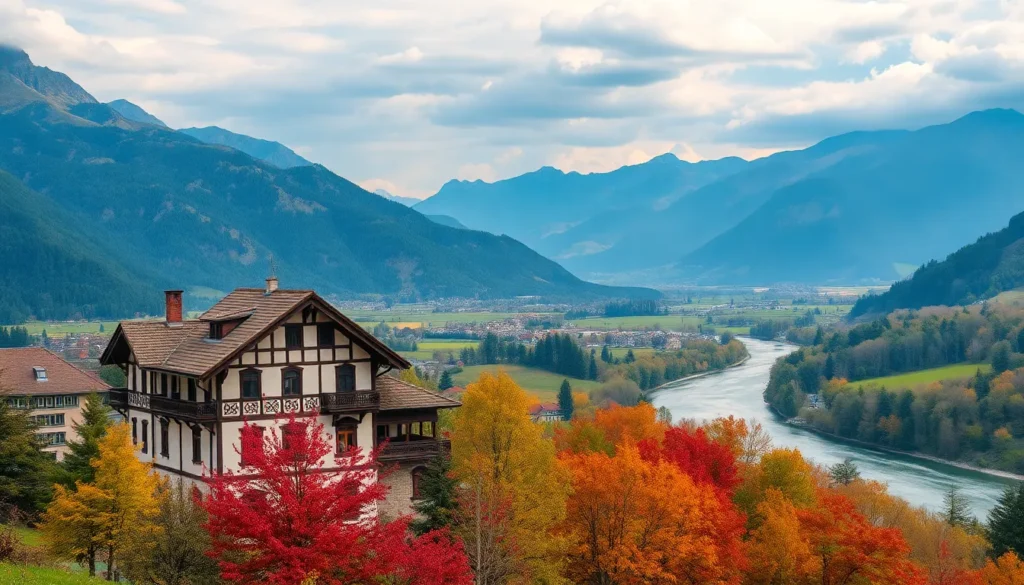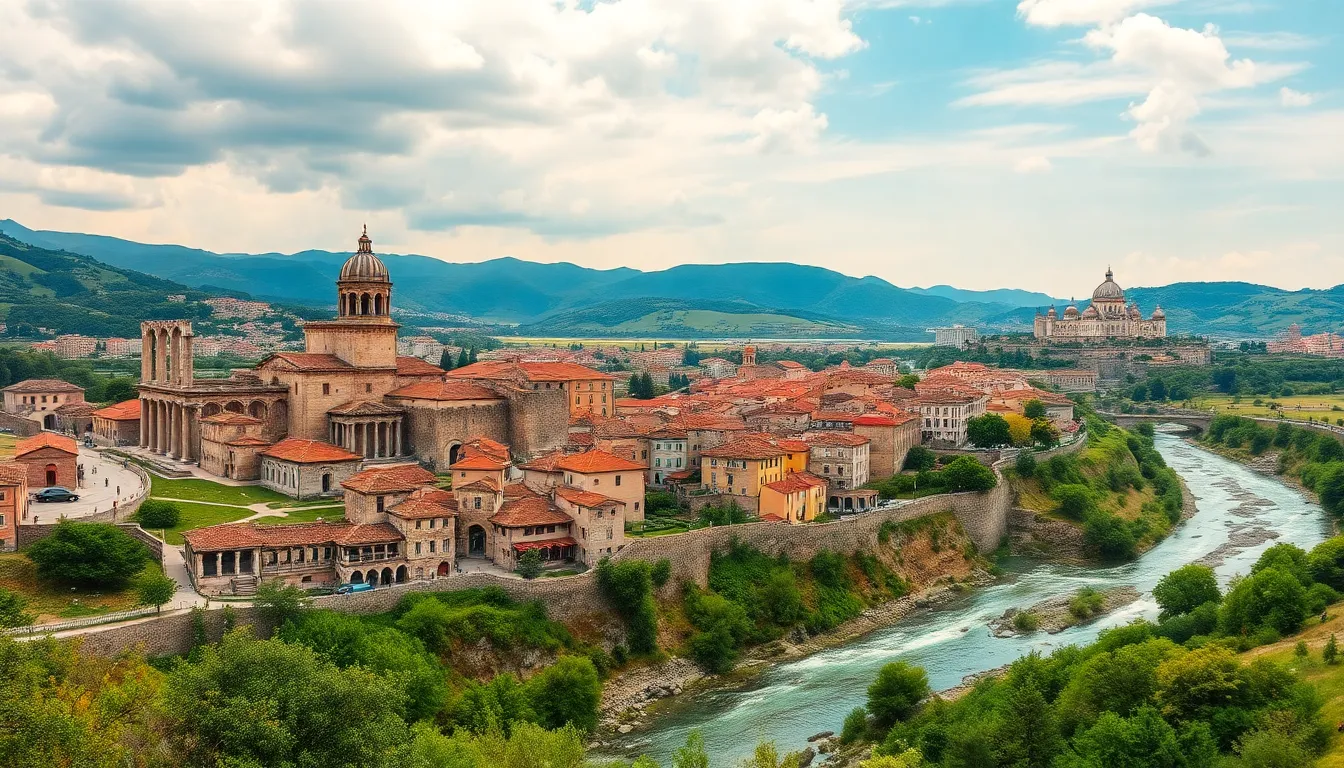Table of Contents
ToggleIn the heart of the Balkans lies a cultural gem known as Sirbserbica. This fascinating region embodies a rich tapestry of history, tradition, and identity, making it a subject of interest for travelers and historians alike. With its unique blend of influences from various cultures, Sirbserbica offers a captivating glimpse into the past while showcasing the vibrant spirit of its people today.
Exploring Sirbserbica reveals not just stunning landscapes but also the stories that shaped its communities. From ancient architecture to lively festivals, every corner tells a tale waiting to be discovered. As interest in this region grows, understanding its significance becomes essential for anyone looking to appreciate the depth and diversity of the Balkans.
Overview of Sirbserbica
Sirbserbica encompasses a culturally rich region within the Balkans celebrated for its historical significance and vibrant identity. The region displays a unique blend of cultural influences shaped by various historical events and interactions among diverse communities.
Cultural Heritage
Cultural heritage in Sirbserbica includes ancient architecture, traditional music, and folk art, reflecting the area’s complex history. Numerous UNESCO World Heritage sites, such as monasteries and fortresses, highlight its architectural importance. Traditional festivals showcase local customs and attract visitors interested in authentic experiences.
Natural Landscapes
Natural landscapes contribute to the allure of Sirbserbica. Majestic mountains, serene rivers, and picturesque valleys create scenic views. The diverse ecosystems teem with various flora and fauna, promoting eco-tourism and outdoor activities.
Communities and Stories
Communities in Sirbserbica possess unique stories and traditions passed down through generations. Family structures emphasize collective values, fostering strong interpersonal connections. These communities engage in practices that maintain their heritage while adapting to contemporary life.
Tourism and Cultural Exchange
Tourism in Sirbserbica has grown significantly, attracting visitors eager to explore its cultural and natural offerings. Local markets and artisanal crafts enrich the experience, highlighting traditional skills. Cultural exchange programs encourage interaction between locals and tourists, deepening understanding of the region’s rich heritage.
Historical Context
Sirbserbica boasts a rich historical narrative shaped by diverse influences and events. Understanding this context enhances appreciation for its cultural identity and heritage.
Origins and Development
Sirbserbica’s roots trace back to ancient civilizations, establishing it as a significant crossroads in the Balkans. Archaeological findings indicate settlements from the Bronze and Iron Ages, evidencing early human activity. The region flourished during the Roman Empire, becoming a vital trade route and cultural hub.
Throughout the Middle Ages, Sirbserbica experienced numerous territorial changes, influencing its demographic and cultural landscape. The Ottoman Empire’s reign from the 15th to the 19th centuries further enriched its cultural fabric, integrating Islamic influences with local traditions. The 20th century brought new challenges, including conflicts that shaped national identities, including crucial events during the Balkan Wars and World War I.
Significance in Culture
Sirbserbica plays a pivotal role in the cultural identity of the Balkans. The region features diverse music styles, such as traditional folk and contemporary genres, reflecting its historical interactions. Art forms like pottery and weaving showcase unique craftsmanship that persists in modern times.
Religious diversity underscores the region’s cultural significance, with Christian Orthodox, Catholic, and Islamic communities contributing to its rich tapestry. Traditional festivals and celebrations, like Slava and Eid, highlight customs that foster community spirit and shared heritage. The inclusion of Sirbserbica’s cultural elements in global discussions emphasizes its importance in the broader narrative of Balkan heritage.
Key Characteristics of Sirbserbica
Sirbserbica possesses distinct features that illuminate its cultural and historical identity. The region’s language and literary contributions reflect its rich heritage and diverse influences.
Language Features
Languages spoken in Sirbserbica include Serbian, Albanian, and several regional dialects. Serbian, as the predominant language, plays a crucial role in the region’s cultural expression. The Cyrillic and Latin alphabets coexist, showcasing linguistic diversity. Local dialects exhibit unique vocabulary and phonetic traits, enhancing the region’s cultural tapestry. This linguistic diversity fosters communication and strengthens community bonds, facilitating exchanges between the various ethnic groups residing in the area.
Literary Contributions
Sirbserbica boasts a vibrant literary tradition that spans centuries. Notable authors and poets from the region, such as Desanka Maksimović and Ivo Andrić, have gained recognition for their influential works. Their writings often explore themes of identity, history, and the beauty of the natural landscape. Literary festivals celebrate both contemporary and classical literature, promoting local talent. The preservation of folklore and storytelling traditions enriches the literary scene, enabling the transmission of cultural values through generations. These contributions underscore Sirbserbica’s role as a vital center of cultural expression in the Balkans.
Contemporary Relevance
The contemporary relevance of Sirbserbica resonates through its influence on modern media and its crucial role in shaping cultural identity.
Influence on Modern Media
Sirbserbica significantly impacts modern media, providing a rich narrative for filmmakers, writers, and artists. The region’s diverse cultural heritage inspires creative expressions, evident in films depicting its historical events, landscapes, and people. Documentaries and television series explore local customs and traditions, enhancing global awareness of Sirbserbica’s cultural offerings. Digital platforms allow for broader dissemination of traditional music and art, reaching international audiences. This exposure fosters cultural appreciation and promotes tourism, creating economic opportunities while honoring the region’s heritage.
Role in Cultural Identity
Sirbserbica plays a vital role in shaping the cultural identity of its inhabitants. The blending of languages, religious practices, and traditions contributes to a distinct societal fabric. Community events, such as local festivals and gatherings, celebrate shared customs and foster unity among diverse groups. The preservation of folklore and literature provides a sense of belonging, reflecting the region’s history and values. Educational initiatives further emphasize the importance of cultural identity, encouraging younger generations to embrace their heritage. This intertwining of past and present instills pride in the local population, reinforcing Sirbserbica’s significance within the broader context of Balkan culture.
Conclusion
Sirbserbica stands as a testament to the rich tapestry of history and culture within the Balkans. Its vibrant identity continues to evolve while honoring its diverse heritage. The region’s unique blend of traditions, languages, and artistic expressions fosters a deep sense of community and belonging among its inhabitants.
As tourism flourishes, the allure of Sirbserbica’s natural beauty and cultural offerings attracts visitors eager to explore its treasures. The ongoing cultural exchange not only enriches the experiences of tourists but also reinforces the importance of preserving and celebrating this remarkable region’s legacy. Embracing its past while looking toward the future, Sirbserbica remains a vital part of the broader Balkan narrative.




